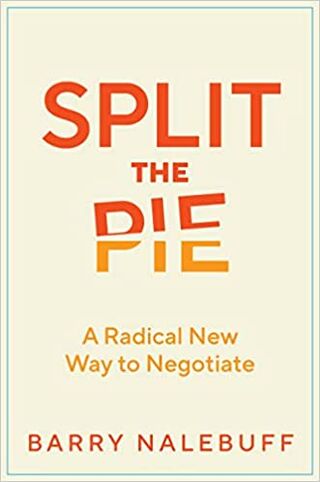Stress
How to Negotiate Stress-Free
Concentrating on positions, not self-interest, is key to splitting the pie.
Posted March 14, 2022 Reviewed by Devon Frye
Key points
- Define what you are actually negotiating about first.
- Both parties are equally responsible for creating the pie you wish to split.
- Fight fire with water. It's not about your interest, but your position that matters.
- Be prepared to write your negotiating partner's victory speech. Either you both come out winning or no one does.
Whether you are negotiating a pay raise or a ceasefire, negotiation itself can be a stressful undertaking. It brings out the worst in us: greed, fear, or a mixture of the two. People often approach it either from a space of power or fairness, neither of which is effective in getting a positive result.
Enter Yale professor Barry Nalebuff, author of Split the Pie: A Radical New Way to Negotiate. His new release gracefully outlines how to approach negotiation from a novel, yet simple method to reach better agreements.
The pie itself can be viewed as the value created when reaching an agreement compared to not reaching one. Customarily, negotiators hash out agreements by concentrating on their interests, not the positions they keep. The answer to this dilemma can be found in accurately identifying and sizing the negotiation “pie,” which is the additional value produced by an agreement to collaborate. It’s the value over and above the sum of the two sides’ best alternatives to a negotiated agreement, or BATNAs.

The pie most people see, however, is the total value available to be divided. Because of this, they miss the mark by arguing over the wrong numbers and issues, taking positions that they think are reasonable, but in fact are based on self-interest.
Once the pie is properly defined, the allocation rule is straightforward: The parties in a negotiation have an equal claim on the pie, so it should be divided evenly. This is true regardless of what they can accomplish on their own, because both are equally needed to create the ultimate gains.
In a recent interview, Nalebuff recommended taking a three-pronged approach:
- Figure out what the negotiation is really about. In other words, define the negotiation pie from the start.
- Understand that both parties are equally responsible for creating that pie. Power and fairness argue for splitting the pie equally, but if you can start the negotiation with the mere intention of splitting the pie, then you can focus your efforts toward making the pie even bigger. In Nalebuff’s view, it would be a more constructive way to work together.
- Fight fire with water. The intention is to write the negotiating partner’s victory speech. In other words, come from a place in which you want the best possible outcome for everyone.
Ultimately, negotiation is about everyone obtaining more through agreements.
The Fear Factor
Why do people fear negotiation so much? It isn’t something we are trained to do. Oftentimes we associate the act of negotiation through fictionalized characters in films or we have watched politicians in the defensive in an effort to protect themselves. The common view is that entering a negotiation is like being read your Miranda rights—anything you say can and will be used against you. Then the negotiating parties act like jerks.
The most common mistake people make is to think about fairness from their own point of view. But fairness is subjective, depending on which side of the table you are sitting on. If you start to think about negotiation as a way to create more value (in this case a bigger pie), defenses fall, shoulders relax, blood pressure lowers and an agreement can be reached. It truly is about win-win.
The world can use more of that these days. In my view, Nalebuff’s common-sense method is certainly a valuable contribution to that end.


